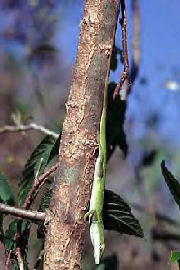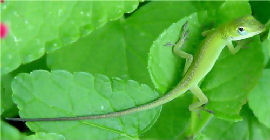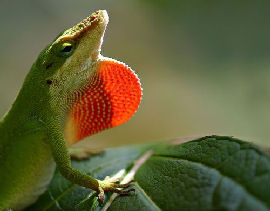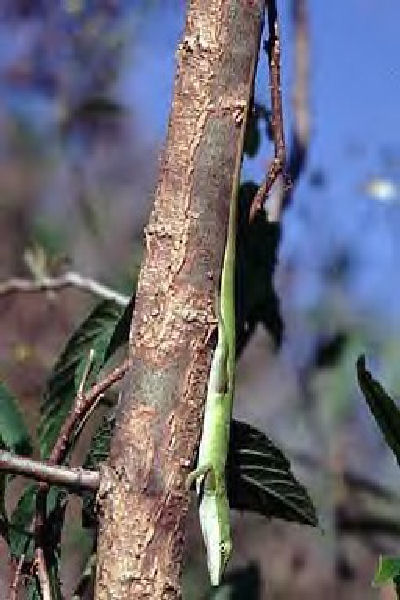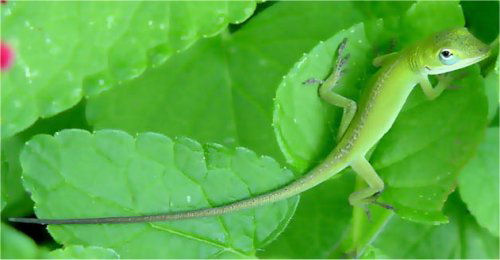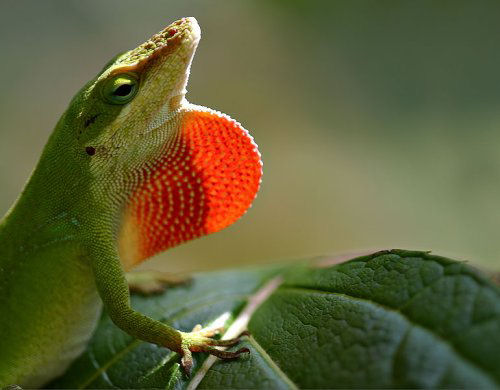Lizards
Habitat
Green Anoles are one of the most arboreal lizards in the United States. Preferred natural habitats are mesic (moist or wet) forests with brushy clearings and forest edges that have an established shrub layer or vine tangles. They are commonly seen on or around homes and other buildings or structures, taking advantage of exposed elevated surfaces on which to bask and forage for food. The diet includes a variety of insects; moths, crickets, beetles, flies, grasshoppers, and butterflies are eaten. Predators include Broadhead Skinks Eumeces laticeps, snakes and predatory birds. Active Green Anoles have been recorded from every month of the year, with peaks in spring and fall. In the winter months they become active during periods of sunny, warm weather.
Range
A lizard of the southeastern
United States, it ranges from North Carolina and southern
Florida west to southeastern Oklahoma then south to southern
Texas. Green Anoles are found throughout the state of Georgia
except the mountainous regions. Green Anoles are the only
anole species native to Florida, but they're getting harder
and harder to find what with all the competition from the
hardy and prolific little brown anoles. Northern Green
Anole (Anole ccarolinensis carolinensis), found throughout
range. Southern Green Anole (Anole carolinensis seminolus),
only in southern Florida.
Discussion
The Green Anole is the only anole native to the United States. The Brown Anole (Anolis sagrei) was introduced in Florida and is established in some of Georgia's Coastal Plains cities. The Brown Anole is never green and has a light streak on the throat. Most green anoles have strawberry-red dewlaps, but some populations in southwest Florida have gray or greenish dewlaps. These populations were recently designated to be a separate subspecies, Anolis carolinensis seminolus. Unfortunately these anoles are just as hard to find amidst the far more plentiful Brown Anoles as their northern cousins. Here's a pretty individual from Fakahatchee Strand that had a faint row of light blue dots down its side.

